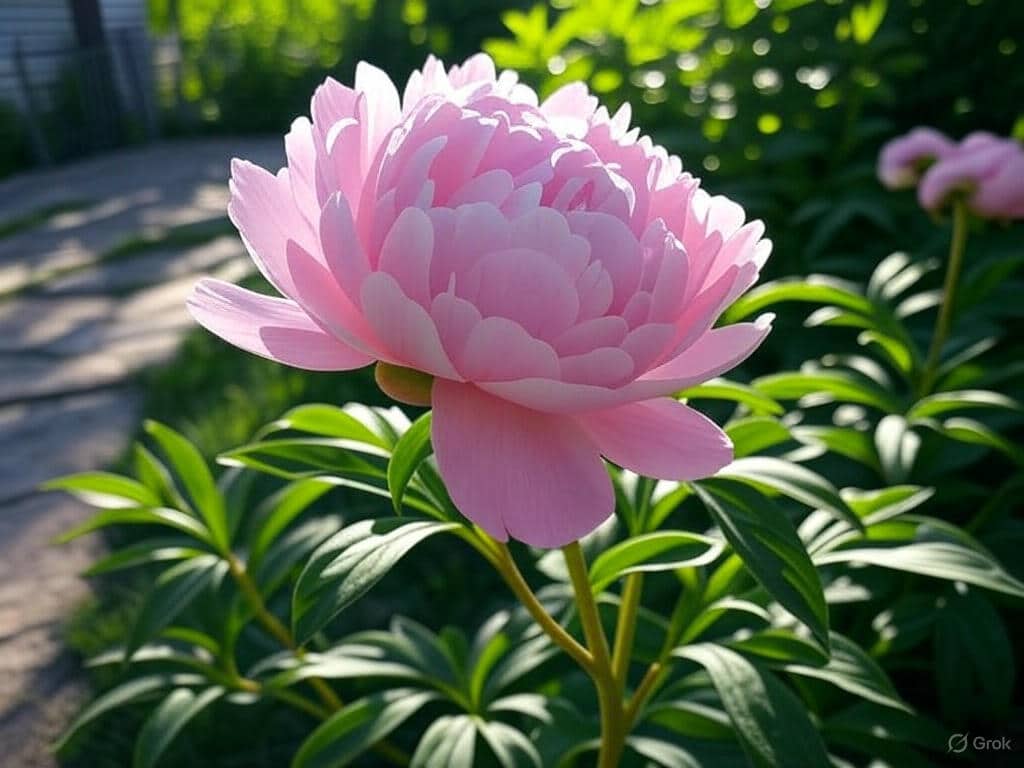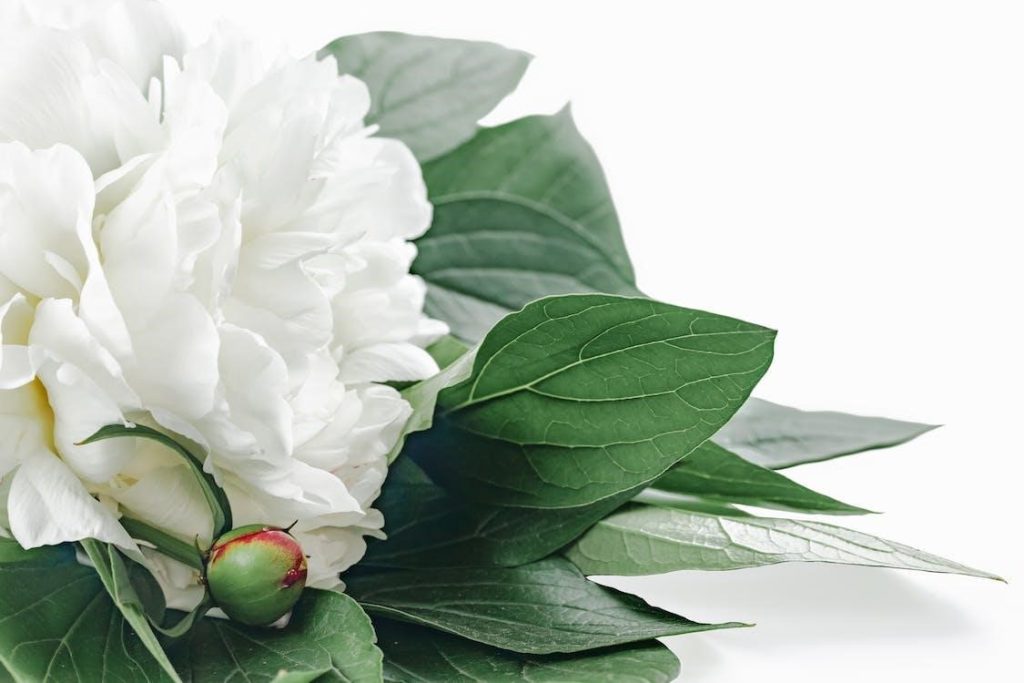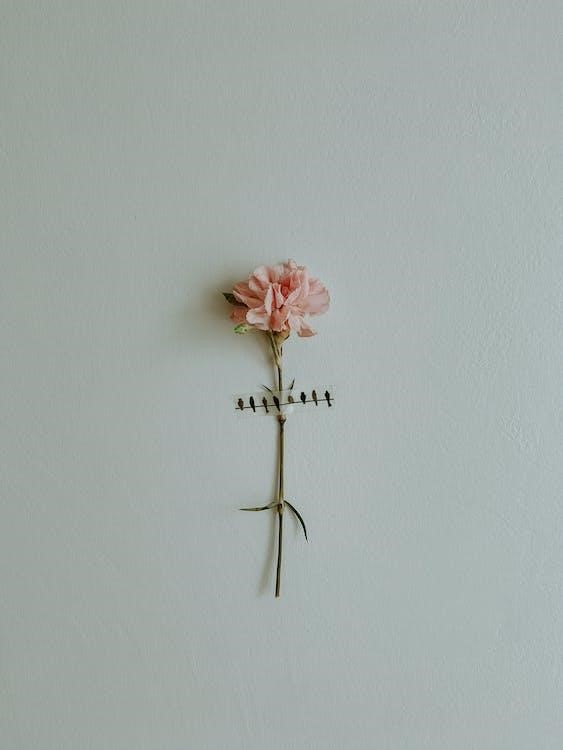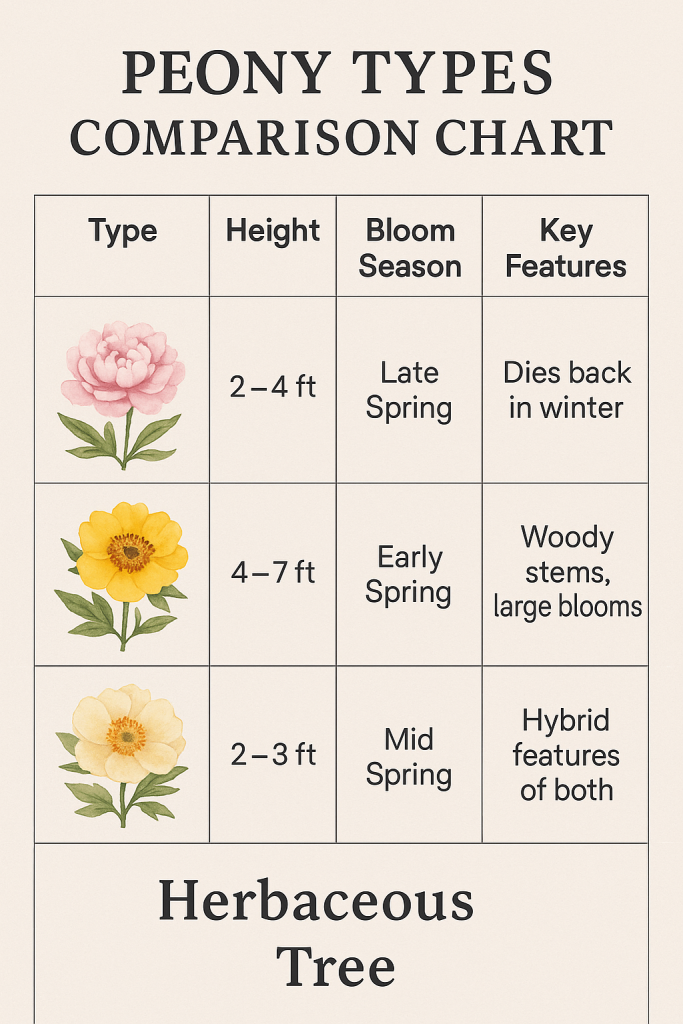Introduction
If you’ve ever admired a garden bursting with lush, romantic blooms, there’s a good chance Paeonia lactiflora, also known as the white peony, was the showstopper. Known for its lush petals, long life, and rich symbolism, this classic perennial has been cultivated for centuries across Asia, Europe, and North America. In this ultimate guide, you’ll learn everything about how to grow Paeonia lactiflora successfully, from choosing the right location to caring for it through the seasons.
Whether you’re planting peonies for their beauty, fragrance, or symbolic meaning—love, romance, and prosperity—this article will provide all the insights and peony care tips you need to cultivate a garden full of vibrant blooms

What is Paeonia Lactiflora (White Peony)?
Paeonia lactiflora is a herbaceous perennial plant native to China, Tibet, and eastern Siberia. It typically grows between 50–70 cm tall and is known for its showy flowers that bloom from late spring to early summer. The blooms can span 8–16 cm in diameter, often in shades of white, pink, crimson, or soft lavender with striking yellow stamens.
Peonies belong to the Paeoniaceae family, and among them, Paeonia lactiflora is the most widely cultivated species, often used as the parent plant in modern hybrids. There are three main types of peonies:
-
Herbaceous peonies (like Paeonia lactiflora)
-
Tree peonies (woody stemmed and shrub-like)
-
Itoh or intersectional peonies (hybrids with both woody and herbaceous characteristics)
-
Botanical Name: Paeonia lactiflora
-
Common Names: White Peony, Chinese Peony
-
Plant Type: Herbaceous perennial
-
Mature Size: 2–3 feet tall and wide
-
Sun Exposure: Full sun to partial shade
-
Soil Type: Well-drained, sandy or loamy
-
Soil pH: Neutral to slightly acidic
-
Bloom Time: Late spring to early summer
-
Hardiness Zones: 3–8
These peonies are native to central and eastern Asia and have been cultivated for centuries for their ornamental beauty and medicinal properties. If you’re fond of pink tones, you might also love adding other pink flowers to complement your peony garden. You can also read more about the botanical history of peonies from the Missouri Botanical Garden for deeper insight.
Choosing the Right Location for Paeonia lactiflora
Picking the right spot for Paeonia lactiflora is crucial for the plant’s growth and beauty. The location determines its overall health, age, and appearance. It’s not just about where you place it; factors like sunlight, soil condition, water system, and drainage all play significant roles.
Sunlight is key. These peonies love full sun but can tolerate some shade. Give them at least six hours of direct sunlight daily. Too much shade can lead to fewer blooms and weaker growth.
Soil quality matters too. They thrive in well-draining soil rich in organic matter. Poor drainage can cause root rot, while too sandy soil can dry out too quickly. Make sure the soil retains moisture but doesn’t stay soggy.
Watering needs are also important. While established peonies are somewhat drought-tolerant, they still need consistent watering during dry spells, especially in the first few years. An efficient water system will help maintain the right moisture level without oversaturating the soil.
Choosing the right location and considering these factors will ensure your Paeonia lactiflora grows healthy and beautiful, enhancing your garden with its stunning blooms. Looking for a low-maintenance flowering plant? Consider adding the vibrant Vermillionaire plant to your collection.
Planting Peonies
1. Best Season and Other Information
The best season to plant peonies is from late April to Mid June. Most gardeners commonly grow herbaceous peonies, characterized by soft, herbaceous stems that die back to the ground nearly every winter. Paeonia lactiflora floret in late spring to early summer. They have a wide range of colors that produce large and showy flowers.
Herbaceous peonies are considered the easiest to grow among the three types.. These trees are the first choice of gardeners looking for low-maintenance and long-lived blooms. They are generally hardy, disease-resistant, and require little maintenance once established. Herbaceous peonies prefer full sun but can also tolerate some shade.
They grow well in a wide range of soil types as long as the soil is well-drained. They are also relatively drought-tolerant (especially Paeonia lactiflora), although they will perform better with regular watering during dry spells.
Tree peonies have woody stems that can grow into small shrubs or large trees depending on the maintenance. They flower earlier in the season than herbaceous peonies and have large, beautiful flowers in shades of pink, white, yellow, or red.
Itoh is a new peony that is a hybrid between the above two peonies. They have the best of both worlds, with disease resistance of herbaceous plants and showy, large flowers of tree peonies.
If you’re fascinated by how plants change through the seasons and want to explore flowers associated with different months, check out the symbolic birth month flowers.
2. Planting Techniques
Cultivating Paeonia lactiflora from seeds can be a gradual and uncertain undertaking. This is due to the frequent hybridization of peony symbolism, which may result in offspring that do not necessarily resemble the parent plant. Aside from this, it will take many years for this plant to mature into a beautiful flower.
Whenever you grow white peony from seed, be sure to choose healthy and disease-free seeds. You should plant the seeds in a well-moisturized but not flooded environment. You also need well-draining soil. Along with a good plantation, they must have a cold storage system. You can use a vegetable drawer in your refrigerator for the cold storage system.
When you plant Paeonia Lactiflora, make sure it has a mature plant that is a minimum of 3 years old, dig up the entire plant and shake it off, use a sharp knife to separate the plant into smaller sections, and make sure that each stem has at least one healthy root, trim to prevent infection
Plant each division in a new location, bury the roots, and water the newly planted divisions. For more tips on seed germination and stratification, you can refer to this peony propagation guide by the American Peony Society.
Chinese Peony Care
Growing Chinese peonies doesn’t have to be complicated. With the right conditions, these plants can bloom beautifully year after year — sometimes for up to 50 years or more!
Light Requirements
Do Chinese peonies need full sun?
Yes — sunlight is one of the most important elements of peony care. Chinese peonies grow best in full sun, meaning they should receive at least 6 hours of direct sunlight each day. In hot climates, they can tolerate a bit of afternoon shade, but too much shade will lead to weak stems and fewer flowers.
Best Soil for Chinese Peonies
Peonies prefer rich, well-drained soil with a slightly acidic to neutral pH (6.0 to 7.0). Heavy clay soil can be amended with compost or sand to improve drainage. Avoid planting in areas with poor drainage, as soggy roots can lead to rot.
Tip: Mix in organic compost before planting to enrich the soil and promote healthy root development.
Watering Needs
Peonies don’t like soggy feet, but they do need consistent moisture — especially during their first few years. Water deeply once a week, and more often in dry spells. Established plants are drought-tolerant, but flowering may suffer without regular watering.
Avoid overhead watering to prevent fungal diseases. Instead, water at the base of the plant.
Ideal Temperature and Humidity
Chinese peonies thrive in cool to temperate climates, and they actually require a period of winter chill (dormancy) to bloom well in spring. They’re hardy in USDA zones 3–8, and some varieties can even survive zone 2 winters.
High humidity isn’t a problem as long as there’s good air circulation to reduce the risk of powdery mildew.
Fertilizer for Peonies
Fertilizing peonies can help them bloom bigger and healthier, but don’t overdo it. Apply a balanced fertilizer (10-10-10 or 5-10-10) in early spring when new shoots emerge. You can feed again lightly after blooming.
Avoid high-nitrogen fertilizers, which can lead to lush foliage at the expense of blooms.
Types of Chinese Peonies (Paeonia lactiflora)
There are hundreds of cultivars of Chinese peonies, with blooms ranging from pure white to deep crimson and everything in between. Some have a light fragrance, while others are highly perfumed.
Here are some popular varieties:
-
‘Sarah Bernhardt’ – Large double pink flowers, extremely fragrant, a garden classic.
-
‘Festiva Maxima’ – White petals with red flecks, old-fashioned charm.
-
‘Bowl of Beauty’ – Unique anemone-style bloom with pink outer petals and creamy centers.
-
‘Shirley Temple’ – Blush pink buds that open to ivory white, great for cut flowers.
Other Types of Peonies
Not all peonies are Chinese! Here’s a quick look at other popular types:
Tree Peonies (Paeonia suffruticosa)
-
Woody stems that don’t die back in winter.
-
Huge, exotic-looking blooms.
-
Blooms earlier than herbaceous peonies.
Itoh Peonies (Intersectional)
-
Hybrid of herbaceous and tree peonies.
-
Best of both worlds: large blooms + sturdy stems.
-
Excellent disease resistance.
Herbaceous Peonies
-
Die back to the ground each fall.
-
Most common garden type.
-
Includes Chinese peonies.
Common Problems and Troubleshooting
If we do any task, then problems may arise. It is the general rule of nature. Such a rule is also applicable here. Many issues arise while growing a plant.
Common issues faced by small-scale gardeners include increased harvesting costs, inconsistent cutting heights, adverse weather conditions, uncooperative pickers, inadequate storage facilities, excessive consumption, and occasional transportation challenges. Sometimes Parasitic diseases also destroy the plant.
Troubleshooting also plays a vital role in the formation of the plant. Immediate cooling after harvesting, proper maintenance of temperature during the storage process, and effective decay control procedures are some ways to troubleshoot the problem.
We must be vigilant in maintaining a healthy plant. There are some strategies for it. You need to apply the correct fertilizer before planting a seed. You must keep a watchful eye on the bugs. Before buying a plant see that it has a good root or bad root. It is always better to clean a garden clean. Water the plant properly.
Overwintering Paeonia Lactiflora
Winter Care
Most varieties of Sarah Bernhardt Peony require between 20 to 45 days of temperature between 32 to 39 degree fahrenheit. Peony symbolism requires one month of chilly wintertime. Peonies also require planting at the correct depth, which is precisely two inches. This depth is recommended for areas exposed to cooler air temperatures
In the winter, peony symbolism roots are at risk of completely freezing if it is in the pot. If the same is in the ground area, it is safe. A good solution is to put your Pot inside the window under the protected garage. Mulching and cutting back foliage may arise if you cannot take proper care.
It’s important to check moisture levels during the winter. A maximum number of steps should be taken to prevent winter damage.
Conclusion
White peonies are not just pretty flowers—they’re symbols of love, health, prosperity, and endurance. With the right care, sunlight, and soil conditions, Paeonia lactiflora can live and bloom for decades, making it a lifelong investment in beauty and well-being.
So whether you’re a seasoned gardener or a beginner, now is the perfect time to start planting this majestic bloom in your home garden. With proper care, you’ll enjoy spectacular blooms year after year. If you enjoy nurturing flowering plants indoors, be sure to explore our guide on the best indoor flowers and plants to beautify your home year-round.
Frequently Asked Questions:
1. Why are there ants on the Paeonia Lactiflora?
Ans. Ants are said to eat the Peony’s nectar in exchange for bud-eating pests. Never harm the ants, Peonys will help you by keeping your peonies safe.
2. Is it possible to dig a portion of the peony’s plant and transplant it?
Ans. The tree Paeonia lactiflora has been in the exact spot for the last 35 years. Yes, you may cut your Sarah Bernhardt Peony and divide it until it is dormant (fall). It is the best time to do it. If it consists of more than two trunks of stem cells then you will have to move it forward because there will not be much to divide if this is the case. You have to dig the whole plant because just taking the section may injure the roots.
3. Please mention the main difference between an herbaceous tree and Itoh Peonies.
Ans. Regular and tree peonies originated from Asia and have beautiful blooming seasons that can live for centuries. On the other hand, herbaceous peonies stand about 2 to 4 ft tall with a short life span compared to the other two. The main difference is tree peonies should not be cut unless there is a dead branch.




